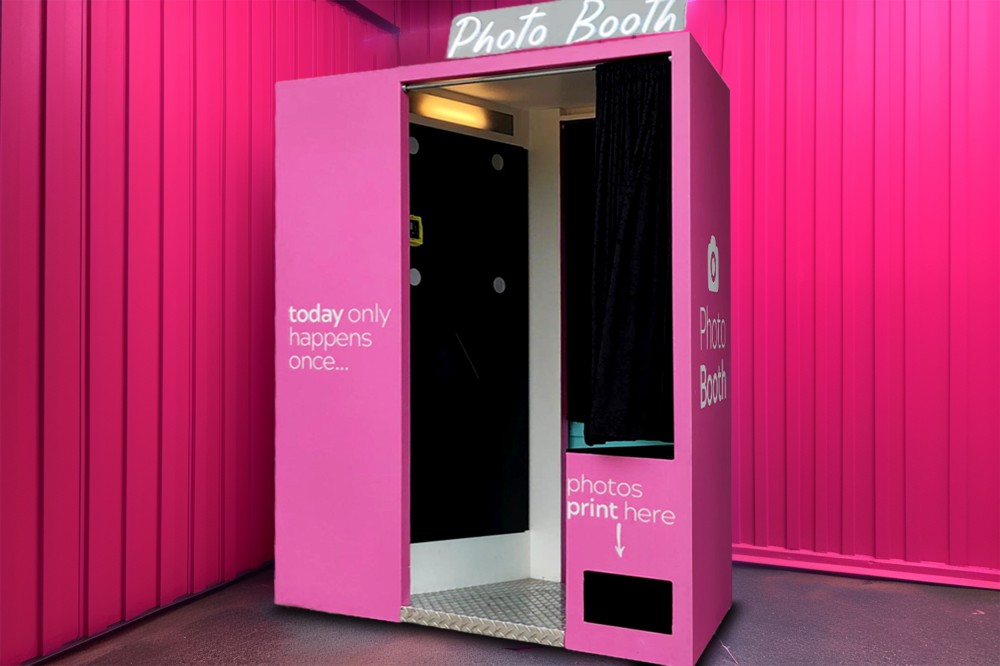
Today, digital technology has transformed the classic photo booth from an amusement park favourite into a high-tech vending machine. This shift reflects the growing complexity of interactions between photography, electronics, and automated retail solutions. This guide provides a comprehensive overview of the photo booth vending machine, breaking down its internal workings in a straightforward way beyond just the fun photo strips.
The Anatomy of a Modern Photo Booth
The External Hardware Components
The modern photo booth is a pretty impressive piece of tech that looks like a regular vending machine. On the outside, you’ll usually find a touchscreen, a camera, lights, and a slot where your photos come out. High-end models are a step up, with high-quality cameras and professional lighting. They also let you customise the outside to fit your company’s style.
The touchscreen is the main way people interact with it, walking them through taking a photo. But beneath the surface is some pretty advanced tech that handles all the behind-the-scenes stuff like processing the pictures, adding filters, and running the printer – all the important parts that make a photo booth tick.
The Internal Computing System
Each photo booth vending machine is built around a powerful computing system. Most current models have a high-end computer used in industries, and they run on specialised software that:
-
Controls the user interface
-
Processes images in real-time
-
Manages payment systems
-
Handles print queuing
-
Collects valuable usage analytics
The computing power varies with the services offered. For high-end devices, the systems are remarkably powerful – similar to gaming computers. This helps with complex graphics operations and simultaneously handles multiple tasks.
The Photo Booth Journey: From Start to Snap
-
Initialising the Photo Session
When a client approaches the photo booth, it detects their presence using sensors or by touching the screen. The user interface kicks in, and the customer is prompted to pay for the service. Payment options typically include contactless payments, mobile payments, or coin slots. This payment system makes photo booths viable in the commercial world.
-
The Photography Process
Once payment is confirmed, the photo booth prepares for image capture. Here’s the sequence that unfolds:
-
A countdown timer appears, allowing subjects to prepare
-
The lighting system activates at precisely timed intervals
-
The camera captures multiple images in succession
-
Raw images are immediately processed by the internal computer
Today’s photo booths often have cameras that are just as good as DSLR models, with lenses that have been tweaked to fit in tight spaces. Plus, many booths come with custom lighting systems that help keep photo quality consistent, even when the surroundings change. This is a major breakthrough in camera technology, especially for the photo booth industry.
-
Image Processing and Enhancement
Within seconds, the captured images undergo sophisticated processing:
-
Automatic colour correction and white balance
-
Background removal or replacement (in advanced models)
-
Application of filters or digital props
-
Arrangement into template formats
-
Addition of business branding elements
What’s really cool is that a photo booth can crunch all the complex numbers using its own processors in just a couple of seconds. Plus, high-end vending machines can even read people’s facial expressions thanks to artificial intelligence and take the best shot of them.
The Output: Printing and Digital Delivery
-
Thermal Dye Sublimation Printing
The printing mechanism in a photo booth represents a marvel of miniaturised technology. Most commercial units employ dye-sublimation printers that:
-
Transfer solid dye onto specially coated paper
-
Apply heat to convert the dye from a solid to a gas state
-
Create water-resistant, long-lasting prints
-
Produce photo-lab quality output within 30-45 seconds
A key factor in making a photo booth run smoothly is keeping the printer in good working order and stocked with supplies. The latest vending machines are pretty clever – they can track inventory and alert operators when maintenance is needed.
-
Digital Delivery Options
Modern photo booth vending machines extend beyond physical prints by offering digital delivery methods:
-
QR code scanning for immediate smartphone downloads
-
Email delivery of digital copies
-
Social media integration for direct posting
-
Cloud storage access for later retrieval
These digital options represent a significant evolution in how photo booths work, extending their utility beyond the traditional printed strip.
Business Intelligence and Remote Management
A key advantage of contemporary photo booth vending machines is their connectivity. Through cellular or Wi-Fi connections, these systems provide operators with:
-
Real-time usage statistics
-
Revenue reporting
-
Supply level monitoring
-
Remote troubleshooting capabilities
-
Software update management
This connectivity transforms the understanding of how photo booths work from a business perspective, making them intelligent retail points rather than simple vending machines.
In A Nutshell
The new vending machine that sells photos is a powerful mix of technology and computing power that lets people buy stuff without a human being there. The machine relies on technology to work smoothly. To really understand how photo booth works, you need to know its ins and outs – it’s actually pretty complex and requires a lot of engineering precision to get the results right, all the time and in high quality, even in busy commercial settings.
Businesses looking for vending solutions that are easy to maintain, bring in revenue, and keep customers engaged can find what they need at The Photo Booth Company. Many major retailers, including The Photo Booth Company, are updating their booths with the latest tech, which means simple and reliable operations are key for their business customers.